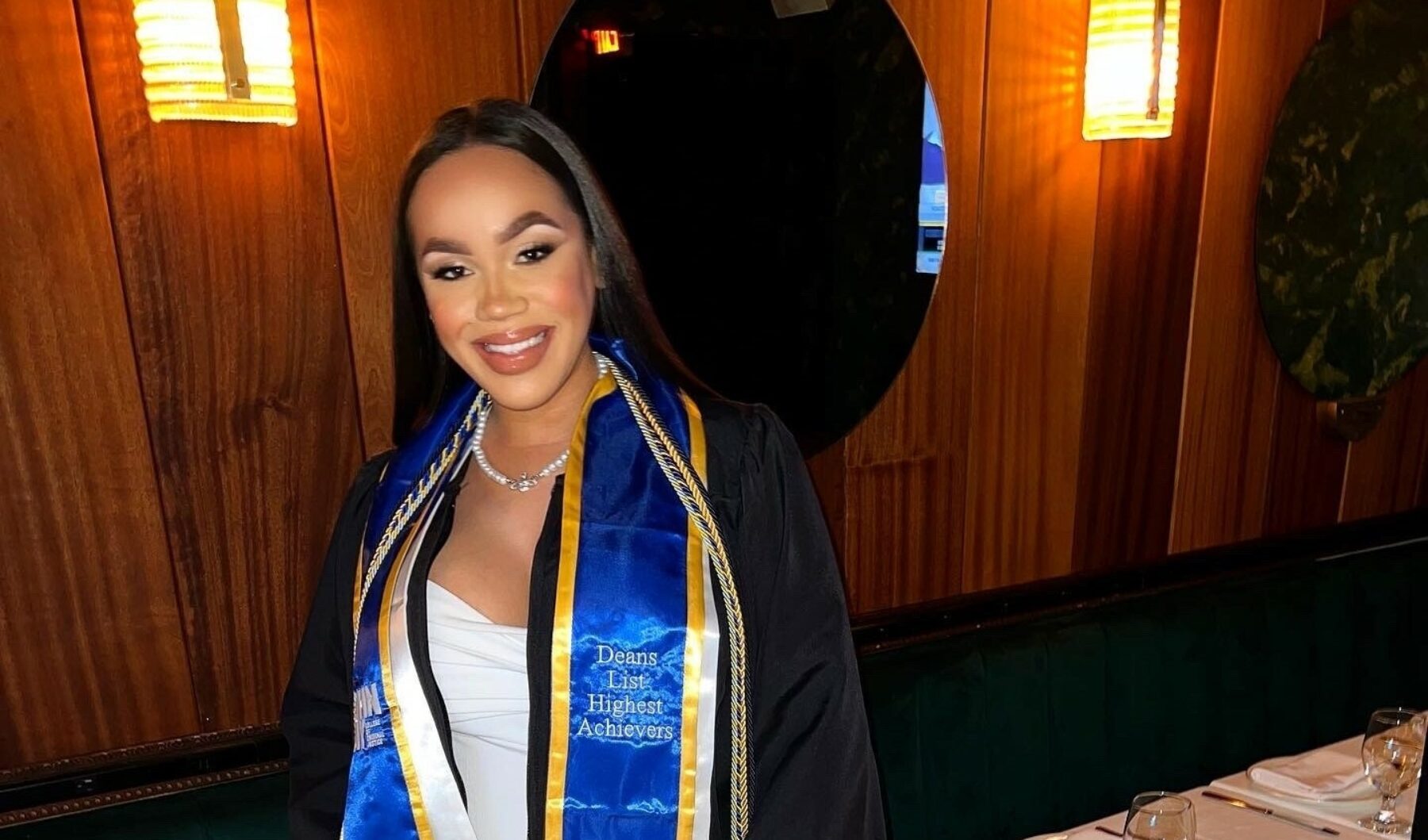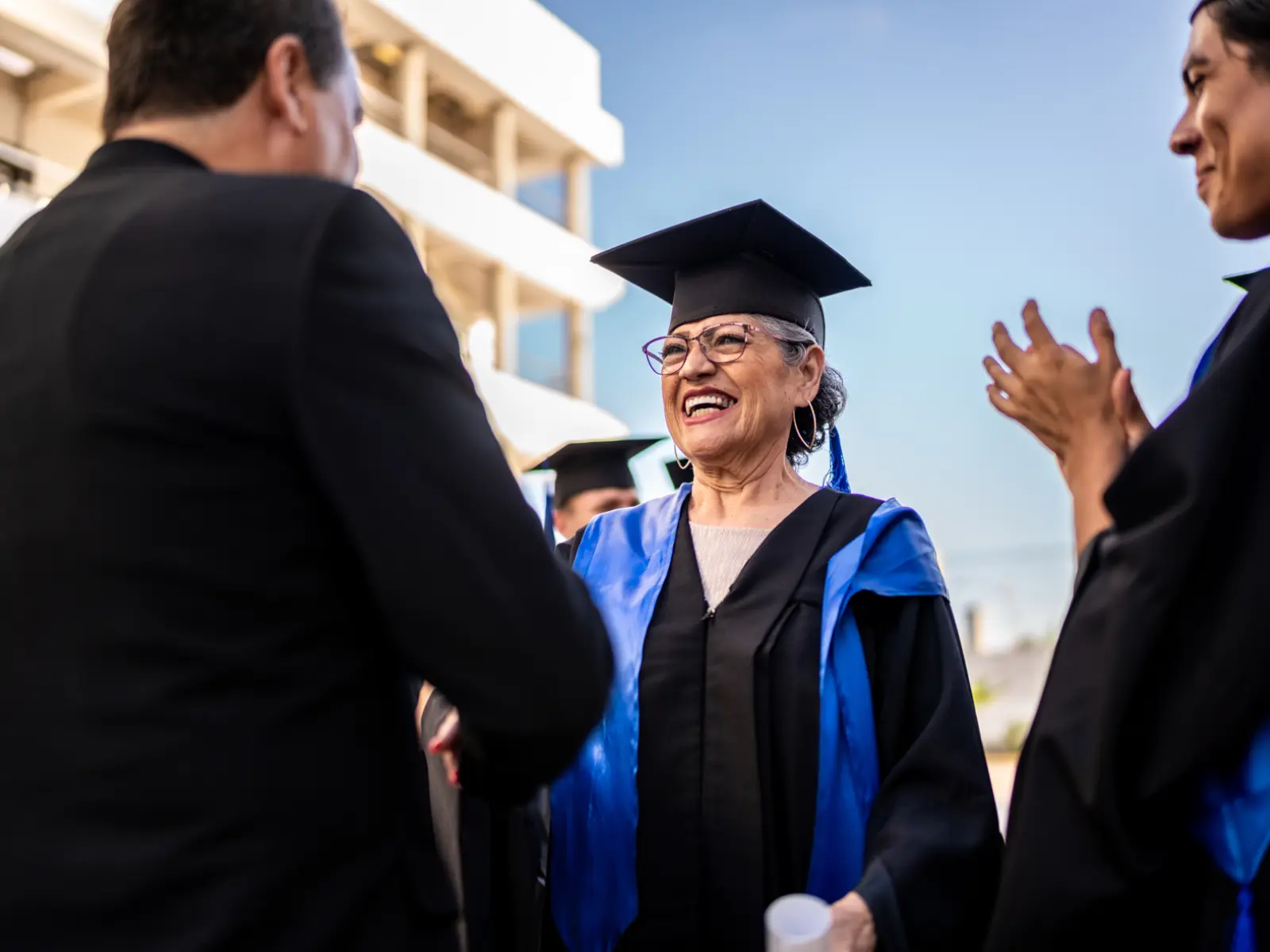When it came time to graduate high school and pick a college, Brooklyn resident Giana Romero knew she wanted to study something that would help her make a difference in the world. Her sights were set on becoming a civil rights attorney.
But, from the start of her application process, she didn’t have much support. Her high school had no guidance counselor, and her parents hadn’t attended college, so they didn’t know how to help her with the Free Application for Federal Student Aid (FAFSA) or the Common Application. Romero looked for resources on her own.
What sold her on John Jay College of Criminal Justice, Romero says, was not just its focus on law but also a special program it offered to support her. The Accelerate, Complete, Engage (ACE) program is designed to help incoming freshmen and transfer students in the City University of New York (CUNY) system, many of whom have completed the FAFSA and the New York Tuition Assistance Program application, or are eligible for Pell Grants. The program incorporates early engagement and community building, a minimum credit requirement for each semester, intensive advising and career development, tutoring and academic services, and direct financial support.
“ACE is a great program,” says Romero, 22, who recently graduated. “When I came to John Jay, I still felt like an adolescent. I was confused. They gave me guidance, and now I’m moving forward in a positive direction.”
For students like Romero, the ACE program is a lifeline in a challenging higher education environment. The program is also proven to work. A new evaluation of ACE shows that participants’ four-year graduation rate is 27% higher than that of non-participants, a level of impact that’s among the highest in research on student success programs.
Typical graduation rates for students at public colleges are low, including in four-year settings. So are lifetime earnings, in large part because so many students do not graduate. But very few student success programs have been shown to actually help — when evaluated, between 80 and 90% of new interventions show outcomes that are not meaningfully better than those of a control group.
“People understand that you get the benefits of college if you graduate,” says Kelly McManus, vice president of higher education at Arnold Ventures. “But what they don’t understand is how to overcome the barriers that students face to make sure they complete a degree. Hands down, there is nothing that comes close to ACE in terms of helping students meet those challenges.”
What the research shows
ACE is the four-year version of another well-tested CUNY program: Accelerated Study in Associate Programs (ASAP). That program has served over 88,000 students, and ASAP participants graduate within three years at more than double the rate of non-participants. ASAP has also led to a 11% increase in earnings for program participants. It has been expanded to colleges across the country, and randomized controlled trials show that it results in dramatic impact in a variety of settings.
ACE, however, is newer — and previously unstudied. Researchers at Métis Associates worked with a researcher from CUNY to design a randomized controlled trial that tracked students for four years between 2018 and 2022. They followed 570 students, with 285 assigned to the program and 285 assigned to a control group. The majority of students identified as female (70%), and most were eligible for Pell grants (72%), an indicator of low household income. A little under half identified as Hispanic or Latino, with smaller percentages identifying as white (14%), Black (10%), Asian or Pacific Islander (10%), or another — or more than one — race or ethnicity (18%). The study primarily examined whether students who participated in the program had higher four-year graduation rates than non-participants. It also explored how the outcomes varied across subgroups of sex, race or ethnicity, and socioeconomic background.
“It was a rigorous study,” says Jing Zhu, a senior associate at Métis Associates who worked on the study. “And the results were very good. Overall, the ACE program participants had a statistically significant higher four-year graduation rate than the control group by 12.4 percentage points.”
Among the subgroups, the increase in the four-year graduation rate was roughly the same for female students, Hispanic students, and Pell Grant recipients, indicating that the program was working for specific groups that may need additional support. (For other subgroups, the sample size was too small to draw strong conclusions.)
“The findings are not surprising, given what we know these programs have done in the past,” says Michael Scuello, a senior associate at Métis Associates who also worked on the evaluation. “It’s just great to see things work, and to be able to put numbers to the anecdotal evidence.”
“It really changed my college experience”
John Jay College launched its ACE program in 2015. DeLandra Hunter, the program’s founding director at the college, says ACE is designed to tackle all the issues that typical college students face and prepare them for postgraduate success.
“There’s a deficit in terms of preparing students and guiding them to the finish line,” says Hunter. “One example is academic advising. There are not enough resources in CUNY to provide personalized academic advising for all students, so ACE addresses that issue. All our students have access to an academic advisor.”
Academic advisors provide career counseling and ensure students enroll in the classes they need to graduate in their major.
The program offers other major benefits. ACE uses a block course scheduling model, placing students into cohorts so they go through classes together and share support within their group during their freshman year. Academic support comes in the form of targeted tutoring, especially in math and writing; the majority of participants make use of the math tutoring in their first year. Perhaps the clearest benefit is financial: ACE pays the tuition gap that is not covered by financial aid and provides subsidies for the sometimes prohibitive expenses of books, school supplies, and public transit.
It’s a pricey model to implement. A study of ASAP found that its estimated cost was approximately $13,800 per student at CUNY and $8,000 per student in a replication in Ohio. But it yields dividends for students who would otherwise risk failing to complete their degree and getting little value from their education. It’s also a good bet for funders. As Shrutika Sabarwal, director of evidence-based policy at Arnold Ventures, explains, ACE is a “shovel-ready program”: Its impact is proven, and policymakers can fold it into their funding decisions with the knowledge that they are using resources for something that works.
Indicators of success
Imani Brown, a resident of Brooklyn, was selected for the ACE program when she enrolled in John Jay College. She had always wanted to be a lawyer and decided that the criminal justice major at the college would help her get where she wanted to go.
“ACE really bettered my college experience by providing me an extensive amount of support,” says Brown, 22. “It was so helpful having that advisor to check in on me and help keep me on track.”
Brown said that assistance with tuition, books, and transportation costs alleviated some financial pressure. Through the program, she also learned about the college’s career office, which helped her find summer internships.
“ACE made sure I knew from the jump what classes I needed, how to navigate barriers, and what resources the school offered. At first, I wasn’t aware that this was such a big deal. Then I started speaking to students who weren’t in ACE and didn’t know about certain resources at John Jay, or where to go for what they needed.”
With the support of ACE, Brown was able to finish her degree early. Today she is preparing to enter her second year at the CUNY School of Law.
Hunter says students like Brown demonstrate the program’s success.
“When I see alumni who have secured entry-level positions, or alumni who are in graduate school, those are indicators to me that the program is working,” says Hunter. “That means that they’ve attained a degree, and they’re moving forward with their careers.”
“We’re already expanding”
Higher education, experts note, is a pivot point in people’s life course. Many students make a large investment, taking on significant debt. But many college students face significant challenges. If they don’t complete their degree, the college experience often leaves them worse off. It’s monumentally important to a student’s lifetime economic mobility that they finish their education.
“It’s really exciting to have something that we know works for bachelor’s students to get them to on-time graduation,” says Diana Strumbos, the research and evaluation specialist for CUNY ASAP and ACE who co-authored the evaluation. “We now have a promising model that we can share with other institutions, and we’re already expanding it. Since the study launched, ACE has expanded to seven CUNY colleges. We are also working with the University of North Carolina system on a replication of ACE at three of their institutions.”
The next step, Strumbos says, will be to evaluate the program for its impact on five-year graduation rates. In the future, the researchers intend to study student earnings post-graduation.
With the help of ACE, Romero has created a map of her post-graduation professional life. Working with her advisor, she landed an internship this summer under Supreme Court Justice Sonia Sotomayor. After that, she will spend the remainder of the year working as a paralegal at the King’s County District Attorney’s Office, a position she found at a career fair that ACE mandated its participants attend. She plans to take the LSAT and apply to law school programs this year.
“If it was not for ACE,” Romero says, “I would not be where I am right now.”












